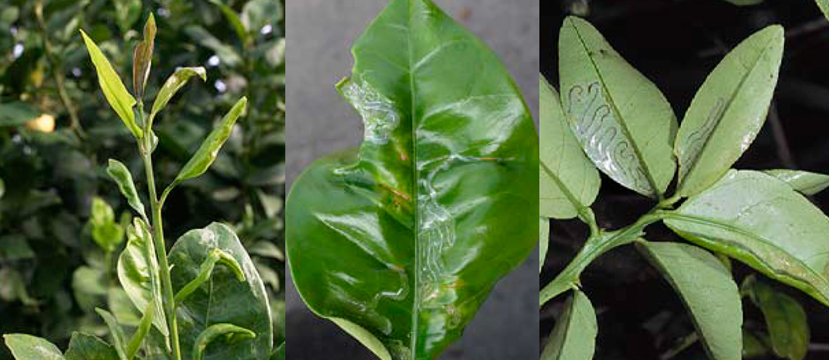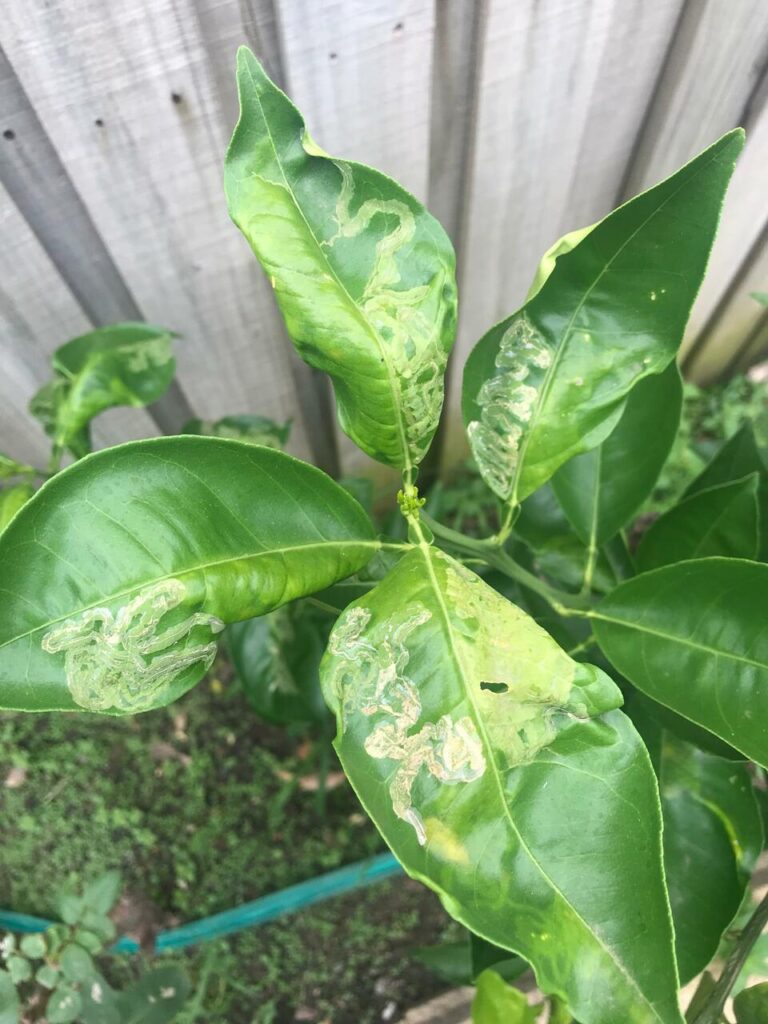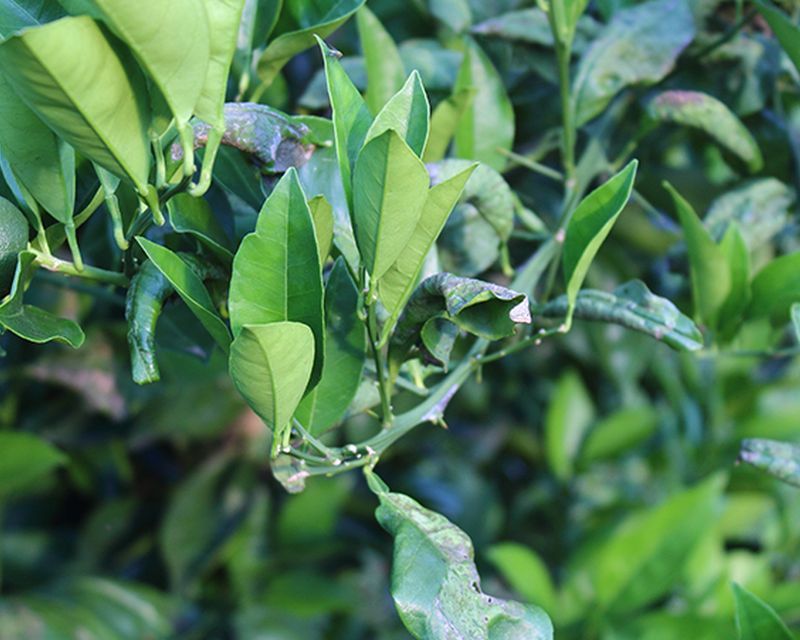
The citrus leaf miner (Phyllocnistis citrella) is a real plague for shrubs of the Citrus genus, primarily lemon trees. Appeared in Corsica in 1994, this small moth now rages every year from spring to autumn in several generations.
The attack is carried out in two stages. In the spring, the adults mate. They then often go unnoticed because they are small (4 mm in length) and have common colors (silvery white). The female lays her eggs on the underside of young lemon tree shoots , usually at the edge of the midrib.
When the larvae hatch, they burrow into the epidermis of the leaf. As they grow, these yellowish, flattened caterpillars become more and more visible. Just like their damage. They dig galleries and feed on young, tender leaf tissue. The older leaves, already lignified, are abandoned.
Recognizing a Citrus Leafminer Attack

Leaves attacked by the citrus leaf miner show silvery reflections that immediately make you think of slug slime trails . Observing closely, winding galleries are visible. The edges of the leaves of the lemon tree also curl. The leaves turn yellow, dry up, photosynthesis is strongly disturbed. If nothing is done, the leaf ends up falling.
Fighting citrus leaf miner

The fight is primarily preventive and involves regular monitoring and careful observation of the young shoots, especially their lower part.
It would seem that the proximity of rosemary plants is a good natural repellent for this small moth.
The use in the spring (during April) of sticky insect traps is also effective. By this process, adult males and females are captured before mating can take place. Egg laying is avoided.
When the disease is present, the use of a , a product approved for biological use , becomes effective. By ingesting it, the insect larvae poison themselves and die. It is also very effective in eradicating caterpillars on many other cultures, in particular with surface habits.
In any case, carefully cut and burn all affected parts.
